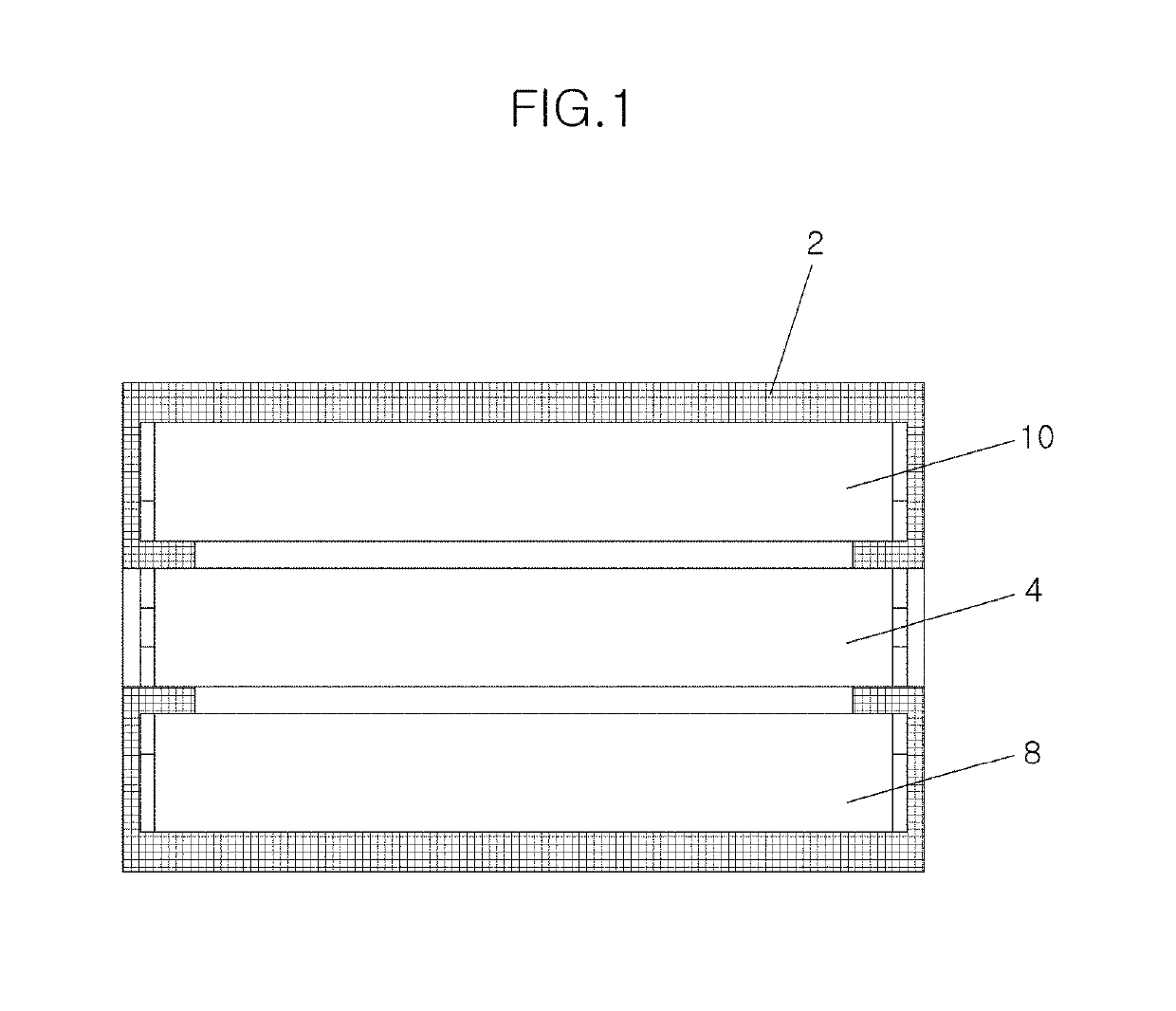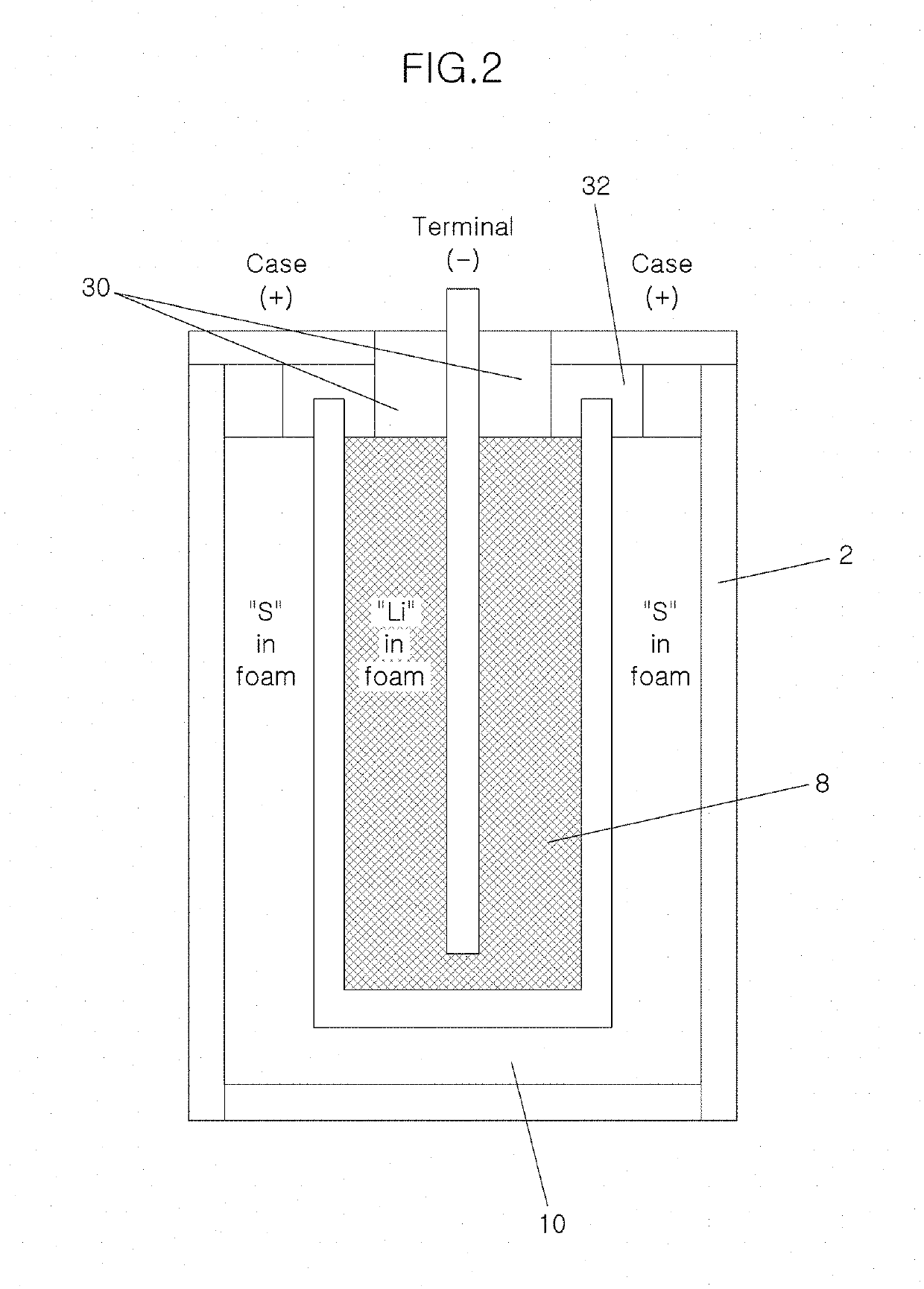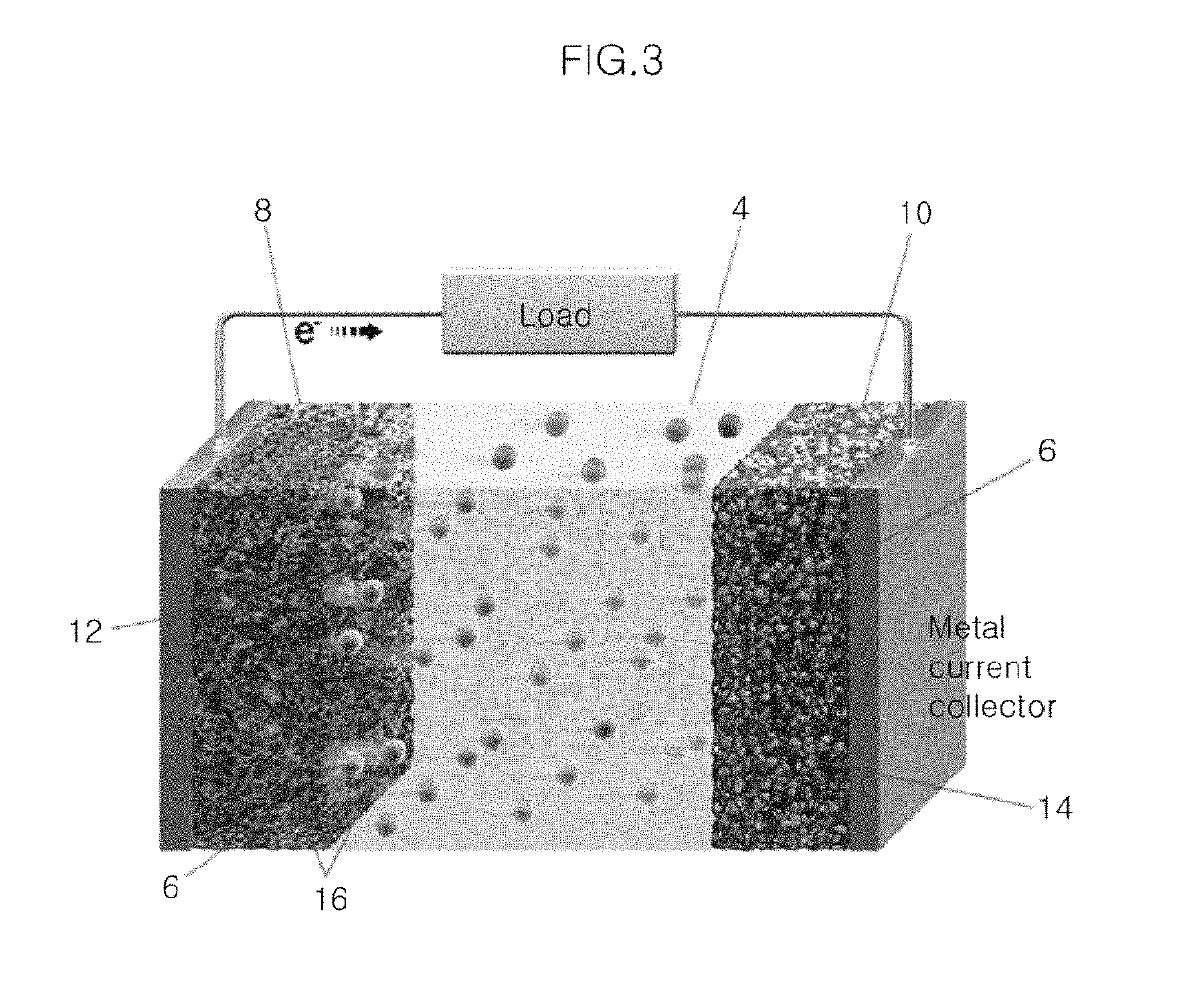Molten lithium-sulfur battery with solid electrolyte and method of manufacturing the same
a lithium-sulfur battery and solid electrolyte technology, applied in the field of lithium-sulfur batteries, can solve the problems of battery rupture due to short-circuit or power drop due to electrolyte depletion, limited use of molten salt-based electrolyte in batteries, and increase the power output characteristics. , the effect of decreasing the interfacial contact resistance and the internal resistance of the electrod
- Summary
- Abstract
- Description
- Claims
- Application Information
AI Technical Summary
Benefits of technology
Problems solved by technology
Method used
Image
Examples
Embodiment Construction
[0061]The features and advantages of the present invention will be more clearly understood from the following detailed description taken in conjunction with the accompanying drawings, and thus the technical idea of the present invention may be easily performed by those skilled in the art to which the present invention belongs. The embodiments of the present invention can be variously modified in many different forms. While the present invention will be described in conjunction with exemplary embodiments thereof, it is to be understood that the present description is not intended to limit the present invention to those exemplary embodiments. On the contrary, the present invention is intended to cover not only the exemplary embodiments, but also various alternatives, modifications, equivalents and other embodiments that may be included within the spirit and scope of the present invention as defined by the appended claims.
[0062]Hereinafter, a detailed description will be given of prefe...
PUM
| Property | Measurement | Unit |
|---|---|---|
| temperature | aaaaa | aaaaa |
| operating temperature | aaaaa | aaaaa |
| temperature | aaaaa | aaaaa |
Abstract
Description
Claims
Application Information
 Login to View More
Login to View More - R&D
- Intellectual Property
- Life Sciences
- Materials
- Tech Scout
- Unparalleled Data Quality
- Higher Quality Content
- 60% Fewer Hallucinations
Browse by: Latest US Patents, China's latest patents, Technical Efficacy Thesaurus, Application Domain, Technology Topic, Popular Technical Reports.
© 2025 PatSnap. All rights reserved.Legal|Privacy policy|Modern Slavery Act Transparency Statement|Sitemap|About US| Contact US: help@patsnap.com



